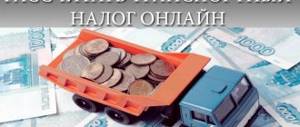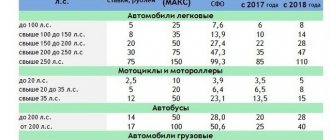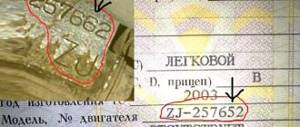Any state wants to remain in a stable economic position, and for this its budget must necessarily have a positive value. This means that there should be much more income and infusions than expenses, which, unfortunately, does not happen in all countries and not always. The state is frantically looking for ways to qualitatively “patch” holes in the budget so as not to accumulate external debts, which again fall on the shoulders of taxpayers, which is why in 2014 it was decided to introduce a previously non-existent luxury tax. Since then, rates for this type of tax have regularly increased, and the rules have become stricter, so it wouldn’t hurt to find out which cars fall under the luxury tax in 2021 in order to finally clarify the situation.
Meaning and functions of luxury car tax
Many were bewildered by the fact that the Tax Code of the Russian Federation did not and still does not mention any law on luxury tax, but its actual effect can be felt by every citizen who purchases a certain type, category and brand of car. In 2014, there were only about three hundred models subject to the tax, then their number grew to seven hundred, and in 2021, about a thousand makes and models of vehicles can be found on the list of those that are rightfully considered luxury.
Important
In fact, there is no special and separate tax on luxury cars, it is a popular name. There are also increasing coefficients for the transport tax, which has long been the subject of debate and controversy in the government. The TN value for luxury cars is calculated by taking into account the power of the car, its cost, year of manufacture and brand, as well as the region in which it will be registered.
Vehicles that are subject to luxury tax include not only passenger cars, but also water and air vehicles (helicopters, airplanes, yachts, boats, motor boats, etc.). Previously, it was assumed that this type of state tax collection would be aimed at creating a kind of reserve financial fund, but at this time this idea is not supported by anything legislatively, and the tax under discussion performs the following functions:
- Anti-corruption activities are financed partly from these fees.
- Regulating the flow and distribution of budget funds, supporting the country’s economy in general.
- Improving the quality of taxes to fill government coffers.
- Maintenance, repair, maintenance, as well as construction of new infrastructure facilities.
The introduction of a new fee only has a positive effect on the economic situation of the state, in general. As for the rest, I would like to respond to those who are dissatisfied with the good old Russian proverb that if you love to ride, you should not forget that you will also have to carry the sled. It makes sense to present a list of cars to which the luxury tax applies and the formula for calculating it in order to dispel all the secrets and veils, this is what we will do in our article.
Transport tax depending on engine power - table
In Russia, owners of all types of vehicles, except agricultural ones, are required to pay transport tax annually.
These payments cover the costs of road repairs and maintenance, and also pay for damage to the environment.
The law introduced a unified scale of transport tax on horses, but the Tax Code allows regions to increase and decrease rates at their discretion.
Although horsepower is no longer the official unit of measurement of engine power in the Russian Federation, it is still used when calculating the insurance premium for compulsory motor liability insurance and the transport tax rate.
People themselves are also accustomed to this measurement. At the same time, many are concerned about the question of why the transport tax depends on engine power.
The logic of legislators is clear. The more powerful the car, the larger it is, and accordingly, it creates an increased load on the road surface.
Since repair costs are compensated by taxes, their amount for owners of more powerful vehicles should be more significant.
Engine power is usually measured in horsepower. 1 l. With. shows the power required to lift a 75 kg load to a height of 1 m in 1 s.
Usually this indicator is measured in kW, but the value of l. With. varies in some countries. In Russia, 1 horsepower is equal to 735.5 watts .
How to determine how much hp. in the car?
There are several methods to determine the horsepower of a vehicle engine:
- If you have documents for the car, you need to look at them for the engine serial number. Then you should add the last 6 digits in pairs and divide the result by 8.5. The resulting value is the number of horses.
- You can look for a service center that has units for calculating engine power. They allow you to set the value to 100% accurate.
- Knowing the power in kW, you should multiply it by 1.35962.
- You can divide the car's power by 0.735, but the result will not be as accurate as in the previous case.
The law does not establish a uniform procedure for calculating the number of horsepower, so measurements may be difficult. The tax office recommends rounding the resulting value to two decimal places.
Detailed table of transport tax by engine power, current for 2021:
| Type of vehicle | Engine power, l. With. | Tax rate, rub. for 1 l. With. |
| Cars | up to 100 | 2,5 |
| 100,1 — 150 | 3,5 | |
| 150,1 — 200 | 5 | |
| 200,1 — 250 | 7,5 | |
| from 250.1 | 15 | |
| Trucks | up to 100 | 2,5 |
| 100,1 — 150 | 4 | |
| 150,1 — 200 | 5 | |
| 200,1 — 250 | 6,5 | |
| from 250.1 | 8,5 | |
| Motorcycle/scooter | up to 20 | 1 |
| 20,1 — 35 | 2 | |
| from 35.1 | 5 | |
| Bus | up to 200 | 5 |
| from 200.1 | 10 | |
| Snowmobile/motosled | up to 50 | 2,5 |
| from 50.1 | 5 | |
| Speedboat/motor boat | up to 100 | 10 |
| from 100.1 | 20 | |
| Jet ski | up to 100 | 25 |
| from 100.1 | 50 | |
| Yacht and other sailing-motor vessels | up to 100 | 20 |
| from 100.1 | 40 | |
| Airplane/helicopter and other powered vessels | with 1 l. With. — 25 | |
| Non-propelled vessel | With 1 ton gross tonnage - 20 | |
| Airplane with jet engine | with 1 kg of traction force – 20 | |
| Other vehicles without engine | from 1 unit TS – 200 |
Thus, the transport tax varies depending on the engine power: the greater it is, the higher the rate.
For example, the tax on cars and trucks changes every 50 horsepower. If the rate is 150 l. With. equals 5, then for 170 horses it is the same, but for 200 horses it will already be higher.
For other types of transport, there are most often only 2 tax rates - one for engine power up to 100 hp. s., the other - for a power of more than 100 hp. With.
Tax rates in the regions of the Russian Federation
If we consider what the transport tax is for 150 horses in different regions, it turns out that in some regions of the Russian Federation it is zero, and in others it reaches 25 rubles. for 1 l. With.
This variation is explained by current legislation. Regional authorities have the right, at their discretion, to reduce or increase the rate tenfold.
For example, for cars with engines up to 100 hp. With. The tax rate in the Perm Territory, Vologda Region, Bashkiria and Sakhalin is a maximum of 25 rubles.
In the Kaluga, Kaliningrad, Tomsk regions, Khakassia and North Ossetia, this figure is significantly lower - 5-6 rubles.
In the Khanty-Mansi and Nenets Autonomous Okrugs, as well as in Chechnya, the tax rate is zero for vehicles with an engine power of up to 150 horses.
How to calculate the amount of payments?
Vehicle owners do not need to calculate the amount of tax - the Federal Tax Service will do this for them.
Federal Law No. 52 of 04/02/14 requires citizens to independently register their vehicles, which are subsequently subject to tax. Otherwise, the car owner faces a fine.
The situation is different with legal entities . Their law obliges them to independently calculate their transport tax and submit data to the Federal Tax Service in a timely manner.
It is not difficult to make such calculations: you need to clarify the tax rate at the place of registration, and then simply multiply it by the number of horses in the car.
When is there no horsepower tax?
Transport tax is levied on all vehicles equipped with engines.
However, there are exceptions to this rule. The Tax Code of the Russian Federation clearly defines until how many horses the transport tax is not paid.
It is not charged for cars with a power of up to 100 horses, purchased with the assistance of social services, and motor boats with a power of no more than 5 horses.
Regardless of the number of l. pp., vessels used by industrial enterprises for fishing and transporting goods, as well as agricultural machinery, are not taxed.
In many regions, a zero tax rate also applies to cars converted for the needs of disabled people, and for cars of large families.
Increasing coefficients
So, if the luxury tax is not a separate fee, which we have already found out, it would not hurt to find out how it can be calculated or at least roughly estimated. It’s worth starting with those same increasing coefficients to the basic transport tax rates, which we already mentioned just above. Just two factors-indicators will significantly influence the size of such a multiplier:
- Year of manufacture of the vehicle.
- The cost of the car, according to the official version, in a new form.
By analyzing the information that can easily be found on the website of the Ministry of Industry and Trade, you can easily understand these increasing coefficients and therefore calculate the required tax payment when purchasing and operating a particular luxury car.
From 3 to 5 million rubles
- The coefficient for vehicles less than one year old will be 1.5 units.
- For a car whose service life barely reaches two years – 1.3 units.
- For cars older than three years – 1.1 units.
5 to 10 million
- The size of the increasing coefficient will be exactly 2.0 units if its service life from the date of issue does not exceed five years.
From 10 to 15 million rubles
- If the vehicle is no more than ten years old, the increase coefficient will be 3 units.
Over 15 million rubles
- In this case, the increasing coefficient remains exactly the same as in the previous category and will be exactly three. However, you will have to pay luxury tax for such a car not for ten, but for two decades.
Where does the average cost of a passenger car come from?
This is not the price for which the trade organization purchased the car. The average cost is calculated by the Department of Transport and Special Mechanical Engineering (a structural division of the Ministry of Industry and Trade) in accordance with the procedure approved by Order of the Ministry of Industry and Trade of the Russian Federation dated February 28, 2014 No. 316 .
List of passenger cars with an average price of 3 million rubles. must be posted annually no later than March 1 on the official website of the Ministry of Industry and Trade on the Internet (www.minpromtorg.gov.ru/). Such a list already exists. It lists 187 models (versions) of passenger cars of different brands, but without indicating the average cost for each car depending on the year of manufacture, since it is not yet possible to calculate these data. You can verify this by familiarizing yourself with the procedure for calculating the average cost of passenger cars. Formula No. 1
To calculate the average cost of a passenger car, one of two formulas is used. Formula No. 1 is applied if the manufacturer (his authorized person) is represented on the territory of the Russian Federation and, at the request of the Ministry of Industry and Trade, no later than
On July 1 and December 1 of the current tax period, data on the recommended retail prices of the car is presented. This formula looks like this:
| Ref | = | P1 + P2 | , Where: |
| 2 |
Spr – average cost of a car according to formula No. 1;
P1 – the recommended retail price of a car of a given make, model, basic version of the car and year of manufacture, obtained as of July 1 of the corresponding tax period for payment of transport tax;
P2 – recommended retail price obtained as of December 1.
Calculation of the average cost of cars using formula No. 1 is based on information on manufacturers' recommended retail prices for cars as of July 1 and December 1 of the corresponding tax period. This formula is used if the manufacturer or his authorized person is represented on the territory of the Russian Federation and the relevant information has been received from them.
Formula No. 2
If the necessary information from the manufacturer (his authorized person) represented on the territory of the Russian Federation has not been received, as well as in a situation where the manufacturer (his authorized person) is not represented on the territory of the Russian Federation, the average cost is calculated using formula No. 2. This formula There are two options to choose from depending on the age of the car.
The average cost of a new passenger car (not older than five years) is determined as follows:
| Sk | = | Р crmax + Р crmin | , Where: |
| 2 |
Sk – average cost of a car according to formula No. 2;
Рcrmax – the maximum selling price of a car in the Russian Federation as of December 31 of the corresponding tax period according to Russian catalogs (for example, FSUE “NAMI”, “Price-N”);
Рcrmin is the minimum selling price of a car as of December 31.
If the car is older than five years, the calculation formula looks like this:
| Sk | = | Р crmax + Р crmin | X | Ks + K t . |
| 2 |
In this case, the maximum and minimum car sales prices as of December 31 are taken from the catalogs of foreign publishers (for example, Audatex, DAT, Kelley Blue Book, Mitchel, Motor, Canadien Black Book, Schwacke). In order to convert the catalog price of a car into prices in ruble equivalent according to the exchange rate of the year of manufacture of the car, the coefficient Kc , the value of which is set as follows:
| KS | = | Q1+ Q2 | , Where: |
| 2 |
Q1 is the exchange rate of foreign currency to the currency of the Russian Federation, established by the Central Bank of the Russian Federation on January 1 of the year of manufacture of the car;
Q2 – foreign currency exchange rate as of December 31 of the year of manufacture of the car.
The resulting average price of a car increases by a coefficient Kt equal to the amount of the recycling fee and import customs duty paid for a similar car.
Key moment
Formula No. 2 takes as a basis data from Russian catalogs or catalogs of foreign countries on the maximum and minimum sales prices of a car as of December 31 of the year the car was produced.
Formula for calculating luxury tax
Having at hand the above tariff schedule, or, rather, a list of increasing coefficients, as well as having found out the basic calculation formula and several criteria for the car itself, you can calculate how much you will have to pay annually, therefore, draw a conclusion whether it is worth purchasing such an expensive vehicle or better will limit itself to something simpler.
Mdv x NS x PC = PTN
Here's a detailed breakdown:
PTN is an increased transport tax, that is, the same luxury tax that you will have to pay in the end.
Mdv is the engine power of the car you have chosen in horsepower.
TS is the base tax rate, which can vary significantly and significantly in different regions.
PC is an increasing factor that should be taken into account based on the year the car was produced, as well as its real value, according to the Ministry of Industry and Trade.
Transport tax by horsepower - cost, table, calculation
In Russia, owners of any type of vehicle, except agricultural ones, must pay an annual transport tax, which covers the costs of road repairs and maintenance, as well as damage to the environment.
Some categories of citizens are exempt from paying this tax - disabled people (the benefit is established regionally), police officers and military personnel.
Transport tax is a regional type of tax - its main provisions are regulated in Chapter. 28 of the Tax Code of the Russian Federation, the rest are adjusted in each region separately.
The amount of the tax depends almost entirely on the power of the vehicle engine, measured in horsepower (hp).
What does this mean
Horsepower is a unit of measurement for the power of a car engine.
One horsepower shows the power required to lift a 75 kg load to a height of 1 m in 1 s of time. Most often measured in kW, but in countries around the world the value is hp. may differ, for example, in Russia it is equal to 735.5 watts.
The country has phased out the use of such a unit as horsepower, but it is still used when calculating compulsory motor insurance and transport tax, and people themselves are accustomed to this measurement of power.
The amount of transport tax that almost every car owner must pay is set depending on the amount of horsepower (power) of the engine.
This value is also used when insuring a car, namely determining the insurance premium for “car insurance”.
How to determine how much hp. in the car
There are several ways to determine the horsepower of a vehicle engine:
- If you have documents for the car, they should indicate the engine serial number. Add the last six digits in pairs and divide the result by 8.5. The resulting number will be hp. your engine.
- Some auto repair service centers have power calculation units that can set the 100% correct value for your engine.
- If you know the engine power in kW, you can multiply it by a factor of 1.35962 to get the horsepower value, or divide the car's power by 0.735 - but this value will not be as accurate as the first value.
The law has not yet regulated the procedure for determining the number of horsepower, and the tax authorities recommend rounding the resulting value to 2 decimal places.
Rate according to the Tax Code
Depending on the amount of horsepower in the engine and the type of vehicle, in Art. 361 of the Tax Code sets the transport tax rate for horsepower in 2018:
| Vehicle | Engine power, hp | Tax rate, rub. |
| A car | Up to 100 | 2,5 |
| 100,1-150 | 3,5 | |
| 150,1-200 | 5 | |
| 200,1-250 | 7,5 | |
| 250.1 or more | 15 | |
| Freight car | Up to 100 | 2,5 |
| 100,1-150 | 4 | |
| 150,1-200 | 5 | |
| 200,1-250 | 6,5 | |
| 250.1 or more | 8,5 | |
| Motorcycle/motor scooter | Up to 20 | 1 |
| 20,1-35 | 2 | |
| 35.1 or more | 5 | |
| Bus | Up to 200 | 5 |
| 200.1 or more | 10 | |
| Dr. self-propelled vehicles | With 1 HP | 5 |
| Snowmobile/motosleigh | Up to 50 | 2,5 |
| 50.1 or more | 5 | |
| Boat/motor. boat, etc. | Up to 100 | 10 |
| 100.1 or more | 20 | |
| Jet ski | Up to 100 | 25 |
| 100.1 or more | 50 | |
| Yacht and other par.-motor. ships | Up to 100 | 20 |
| 100.1 or more | 40 | |
| Non-propelled vessel | With 1 ton gross tonnage | 20 |
| Airplane/helicopter and other vessels with engines | With 1 HP | 25 |
| Airplane with jet engine | With 1 kg traction force | 20 |
| Dr. vehicles without engine | With 1 unit vehicle | 200 |
The table shows approximate all-Russian tax rates, which may change regionally by constituent entities of the Russian Federation, but no more than ten times up or down.
At what power should you start paying?
Any vehicle equipped with an engine is subject to transport tax.
It is calculated based on the engine power in the device, converted into horsepower. The tax is calculated for each unit of power.
But the Tax Code contains an amendment - a list of vehicles on which transport tax is not charged:
- passenger cars equipped for use by disabled people;
- rowing boats;
- motor boats with engine power up to 5 hp;
- passenger cars with an engine up to 100 hp, which were received or purchased with a benefit through social networks. organs, etc.
Also, constituent entities of the Russian Federation can establish their own regional benefits.
For example, benefits for disabled people of groups 1 and 2, tax exemption for engine power less than 70 hp. etc. – this should be clarified with the tax office at your place of residence.
How it depends
The amount of tax paid directly depends on the number of horsepower in the engine - the more there are, the more you need to pay.
For example, the tax on cars and trucks changes every 50 hp. For other vehicles, there are most often 2 points of separation - up to 100 and more than 100 hp. Sometimes there are no criteria for dividing a vehicle.
The legislation also adopted amendments to the luxury law, creating a list of vehicles for which increased taxes should be paid, which caused a lot of discontent among the population.
How to calculate
Ordinary citizens do not need to calculate transport tax on their own, since this is handled by the tax office.
But Federal Law No. 52 of April 2, 2014 establishes that individuals must register their vehicle themselves, on which tax is subsequently charged.
If the vehicle is not registered, its owner will then be fined.
Legal entities must calculate their transport tax themselves and submit information to the tax office on time, otherwise they will be subject to penalties.
Calculating the tax is easy - you need to find out your tax rate at the place of registration and multiply it by the number of horsepower of your vehicle.
The result is the tax amount for 12 months. If you registered the vehicle less than a year ago, the tax amount will be correspondingly less.
For example, the car has a power of 123 hp. and registered 8 months ago. The tax amount will be as follows:
3.5 rub. (we take the all-Russian rate) * 123 * 8 / 12 = 287 rubles.
If, after registering a vehicle, its engine was replaced, as a result of which the device had a different power, you should report this to the traffic police department at the place of your registration and write a corresponding statement.
Then in the future the transport tax will be calculated based on new data.
Previously, control over the payment of taxes was the responsibility of traffic police officers, without a receipt from whom it was impossible to undergo a technical inspection, which threatened the owner of the vehicle with fines.
Because of this, there were few delays in paying taxes. At the moment, the tax authorities have full control over this process.
Now even those people who did not pay tax are obliged to do so. After all, if a person has a broken car that is simply sitting idle in the garage, he does not need an inspection ticket, and therefore he did not want to pay the tax.
Some underwent technical inspection illegally, without providing a traffic police receipt.
Now, any owner of a registered vehicle must pay tax on it. Therefore, the traffic police recommends deregistering those cars that are broken down, stolen, or for some other reason are not functioning at a given time.
You should also be careful when selling a car by proxy - if the new owner does not register it, then the tax will be sent to you, and failure to pay it will result in a fine in the amount of 1/300 of the central bank’s refinancing rate for 1 day of delay.
If for any reason you do not use your vehicle, you sold it by proxy, or it no longer exists at all (stolen, sold for spare parts, etc.), but which is registered with the traffic police, collect all the necessary documents to prove this , and contact the tax authority at your place of registration.
Transport tax must be paid to each owner of a vehicle that is listed in the Tax Code.
The amount of tax, as well as benefits for it, are established by the constituent entities of the Russian Federation independently. But in general, the more horsepower (power) in the engine, the higher the tax rate for the citizen will be.
Also, some vehicles are included in the category defined by law as a luxury, therefore it is necessary to pay an increased transport tax for them.
You should carefully monitor the vehicles registered in your name, as tax must be paid even if the car is faulty.
: Horsepower tax
Attention!
- Due to frequent changes in legislation, information sometimes becomes outdated faster than we can update it on the website.
- All cases are very individual and depend on many factors. Basic information does not guarantee a solution to your specific problems.
That's why FREE expert consultants work for you around the clock!
APPLICATIONS AND CALLS ARE ACCEPTED 24/7 and 7 days a week.
Source: https://provodim24.ru/transportnyj-nalog-po-loshadinym-silam.html
Cars eligible for luxury tax in 2021
The main reason for increasing tax deductions lies in the financial plane, that is, the higher the price of a car, the more you will need to pay, at least one and a half, or even two or even three times. This means that even if you buy a car secondhand and its cost is no more than three million rubles, but the official price in the Ministry of Industry and Trade catalog turns out to be much higher, you will have to pay tax, there is no way to hide from this and there is no escape.
Therefore, it is very important to monitor the replenishment of the list of luxury cars, which is growing with every goal, due to soaring inflation and an increase in all prices, not to mention luxury vehicles. Most brands whose models are subject to luxury tax can be limited to a small list:
- Jaguar.
- Audi.
- Land Rover.
- Mercedes-Benz.
- Lamborghini.
- BMW.
- Chevrolet.
- Cadillac.
- Lexus.
- Aston Martin.
- Bugatti.
- Rolls-Royce and others.
You can directly visit our website and check it regularly before purchasing. For convenience, it first lists cars that cost three million and more, then those cars that cost five, ten and fifteen million rubles. The list is constantly being updated, so it is worth closely monitoring the changes so as not to fall into a network of debts, since if you are in debt, penalties may increase, although not large, but for large amounts, very noticeable.
Benefits, discounts and concessions
This type of tax turns out to be really significant and the amounts are far from childish. You can get rid of such extortions over time, when your car is no longer new, but will serve three, five or ten to twenty years faithfully. True, by then everything may change. It is, of course, possible to avoid paying luxury tax on cars in 2021, but to do this you need to belong to one of the population groups listed below, and also document your right to such a discount.
- Parents or guardians of large families do not pay luxury tax and, moreover, may not pay transport tax at all in most regions of our Motherland, about which there is a useful article on the website.
- Veterans of WWII and UBI do not pay luxury tax, even when they own expensive vehicles.
- Disabled people of the first and second groups.
- Recipients of the Order of Glory of any degree, as well as holders of the title of Hero of the Soviet Union and the Russian Federation.
- Liquidators of man-made and radiation accidents and disasters, as well as those affected by them.
- Persons with special services to the Motherland, astronauts and others.
In some regions of our huge country, pensioners are partially or completely exempt from transport tax; therefore, they will not pay luxury tax. This information needs to be constantly checked, because local authorities may change the rules and system for calculating subsidies and providing benefits annually.
Let's sum it up
There are several other cases where the luxury tax is not levied on car owners, and some of them are actively used by some financially unscrupulous individuals. So, taxes are not charged at all on a wanted car, that is, neither a transport tax nor one that relates to luxury. It is unlikely that you will be able to cheat here, since there must be official confirmation from the police that the car is indeed stolen and is wanted.
The second option is to register the car not to the real owner, but to an organization, for example, a society for the blind and similar groups. The third method is based on the fact that people with disabilities do not pay luxury taxes, and therefore vehicles converted for the needs of a person with special needs and disabilities are not subject to such taxes. It is clear that hiding income and evading taxes will not bring anything good and in the end, most likely, the truth will come out, then you can end up not only with serious debts, but also with a prison sentence, so it is better to avoid such incidents and live honestly.
Transport tax depending on engine power - table
Tax obligations of citizens of the Russian Federation extend to contributions to the budget for the right to own a particular vehicle.
The general procedure for paying tax is established by the Tax Code of the Russian Federation, and specific rules for calculating and making payments are determined at the level of the constituent entities of the Federation.
The transport tax scale for horses provides the basis for further calculations of amounts paid to the regional budget.
Despite the fact that it is more correct to use other units of measurement to determine the power of a vehicle, horsepower is a traditional measure to which Russian car owners are accustomed when calculating tax or the cost of compulsory motor liability insurance. The application of the engine power indicator to calculations seems logical, because this value is closely related to the dimensions and loads on the road surface during active use of the vehicle on the roads.
General tax provisions
All car owners who do not belong to the preferential category are required to pay tax if the vehicle is registered with the State Traffic Safety Inspectorate for a specific owner and belongs to the following types:
- Ground transport (cars, trucks, motorcycles, buses).
- Water vehicles (boats, yachts, motor boats, etc.)
- Aircraft (planes, helicopters).
The objects of taxation are indicated in more detail by paragraph 1 of Art. 358 tax legislation.
Cancellation of taxation
Transport units, even if they are taxable, are subject to tax abolition in the presence of situations defined in paragraph 2 of Art. 358 NK:
- special facilities operated by persons with disabilities;
- passenger vehicles transferred for use to citizens by social security authorities, provided that the engine has a power of no more than one hundred horsepower;
- recognizing the car as stolen;
- special equipment used for agricultural needs (tractors, combines), any agricultural machinery;
- transport registered to federal authorities or local administration.
IMPORTANT! When calculating payments in favor of the budget, the general rule applies - the larger and more powerful the vehicle, the higher the costs of car owners and the higher the costs of road repairs.
To correctly calculate the fiscal tax, you need to understand what horsepower is and what it means when applied to a vehicle.
One horsepower is equivalent to the power required to lift 75 kg to a meter height in 1 second.
It is more correct to measure power in kilowatts, since the horsepower indicator in the Russian Federation and other countries will be different. For example, the Russian standard equates to 1 hp. = 735.5 watts.
The procedure for determining horsepower
Since the tax for a specific type and category of transport is determined by power, you should understand how it is determined and calculated:
- according to the engine serial number (information is in the technical documentation for the car), the calculation formula for the number is: the sum of the last three pairs of digits is divided by 8.5, the resulting value is usually considered to be the power in hp.
- calculation of power on special units in auto service centers, devices determine power with a minimum error;
- if the indicator in kilowatts is known, it is multiplied by the value 1.35962.
Russian legislation does not have precise regulations on the procedure for determining horsepower.
As a result, in the process of calculating the actual value of power, payers face great difficulties in agreeing on the initial values for carrying out calculations by the Federal Tax Service.
To reduce the frequency of errors and discrepancies, employees of the fiscal authority recommend calculating the payment amount rounded to hundredths.
Rules for determining transport tax
Three components influence the final determination of the amount of payment to the budget:
- Standards and rates approved at the level of the subject of the Federation.
- Year of manufacture of the vehicle.
- Engine power.
- Environmental class.
In the absence of separate legislative norms in the region, they proceed from the general values adopted at the general federal level.
Determining horsepower is not particularly difficult if the car is properly registered in the traffic police database.
The documents issued upon vehicle registration provide information about the engine power in horsepower. The main documents for a vehicle include the title and registration certificate.
Also, a direct relationship is established between the amount of payment and the duration of ownership of the vehicle. This means that in case of sale or purchase of a car during the reporting year, transport tax will be charged partially, taking into account the months of ownership of the car.
Total rate
The amount of tax depends on the type of vehicle. Most car owners in 2021 are based on the tax scale presented in the table:
| Region | Power of passenger cars, hp | |||||||
| Up to 100 | 100 — 125 | 125 — 150 | 150 — 175 | 175 — 200 | 200 — 225 | 225 — 250 | ||
| Moscow | 12 | 25 | 35 | 45 | 50 | 65 | 75 | 150 |
| Saint Petersburg | 24 | 35 | 35 | 50 | 50 | 75 | 75 | 150 |
| Novosibirsk | 6 | 10 | 10 | 30 | 30 | 60 | 60 | 150 |
| Ekaterinburg | 9,4 | 9,4 | 9,4 | 32,7 | 32,7 | 49,6 | 49,6 | 99,2 |
| Nizhny Novgorod | 13,5 | 31,5 | 31,5 | 45 | 45 | 75 | 75 | 150 |
| Kazan | 10 | 35 | 35 | 50 | 50 | 75 | 75 | 150 |
| Chelyabinsk | 7,7 | 20 | 20 | 50 | 50 | 75 | 75 | 150 |
| Omsk | 7 | 15 | 15 | 30 | 30 | 45 | 45 | 90 |
| Samara | 16 | 24 | 33 | 43 | 43 | 75 | 75 | 150 |
| Rostov-on-Don | 12 | 15 | 15 | 45 | 45 | 75 | 75 | 150 |
| Ufa | 25 | 35 | 35 | 50 | 50 | 75 | 75 | 150 |
| Krasnoyarsk | 5 | 14,5 | 14,5 | 29 | 29 | 51 | 51 | 102 |
| Permian | 25 | 30 | 30 | 50 | 50 | 58 | 58 | 58 |
| Voronezh | 20 | 30 | 30 | 50 | 50 | 75 | 75 | 150 |
| Volgograd | 9 | 20 | 20 | 40 | 40 | 75 | 75 | 150 |
Each section has its own additional gradations with a specific meaning established. It should be taken into account that this scale for applying the rate per hp. established for Russia as a whole, however, in the vast majority of cases, regions independently make adjustments to the calculations.
Motorcycles
Motor vehicles, like passenger vehicles, are taken into account by engine power, based on the following gradation:
- less than 20 horsepower – 7;
- 30-35 hp - 15;
- 35 and above hp - 50.
As can be seen from the generalized federal values, even within the same vehicle category, rates may apply that are many times higher than the initial value for motor vehicles of minimal power.
Buses, trucks, other vehicles
For transport involved in passenger transportation, the difference in the applied rate reaches more than a fivefold increase.
IMPORTANT! The main parameter for setting a rate is power (in horsepower or kW) and the age of the car.
https://www.youtube.com/watch?v=3srCrNFdf48
For buses not older than 5 years, the rate is 10-35, while for older buses the rate is from 15 to 55.
For trucks, the gradation also suggests differences in the application of the rate: up to 100, up to 150, 200, 250 hp.
Regional payment standards and benefits
The specifics of the application of transport tax are related to the peculiarities of the economic situation and the saturation of vehicles in a particular subject of the Federation. Local authorities independently determine:
- settlement rates;
- application of benefits.
It should be borne in mind that the differences between the amount of fiscal contributions in different areas can be very serious. In one subject of the Russian Federation, the rate is approaching zero, in another region there are extended lists of benefits, in a third subject the cost of contributions is a significant cost item.
There is a restrictive barrier, above and below which the region cannot set a rate: the maximum and minimum indicators cannot differ more than 10 times from the original federal value.
The obligation to pay lies with every citizen who owns a vehicle. However, in some cases, the vehicle is not subject to tax. You should know how much tax is not paid, based on engine power:
- for passenger vehicles - up to 100 hp, if the product was purchased through social services;
- for motor boats - with a power of no more than 5 hp.
Video about paying transport tax
In addition, there are many preferential categories of citizens who are either completely exempt or enjoy a significant discount when making contributions to the regional budget for their own transport. For example, many subjects of the Federation practice benefits for pensioners and large families if the vehicle does not exceed a certain capacity.
Source: https://auto-lawyer.org/transportnyj-nalog/transportnyj-nalog-v-zavisimosti-ot-moshhnosti-dvigatelya-tablica.html







